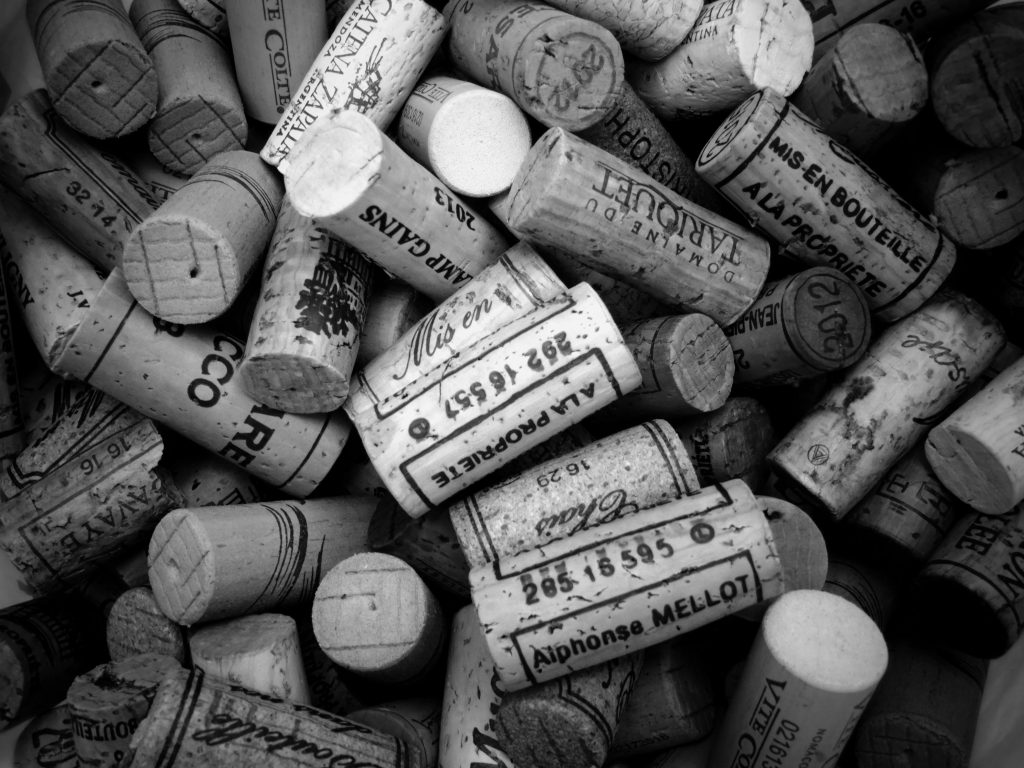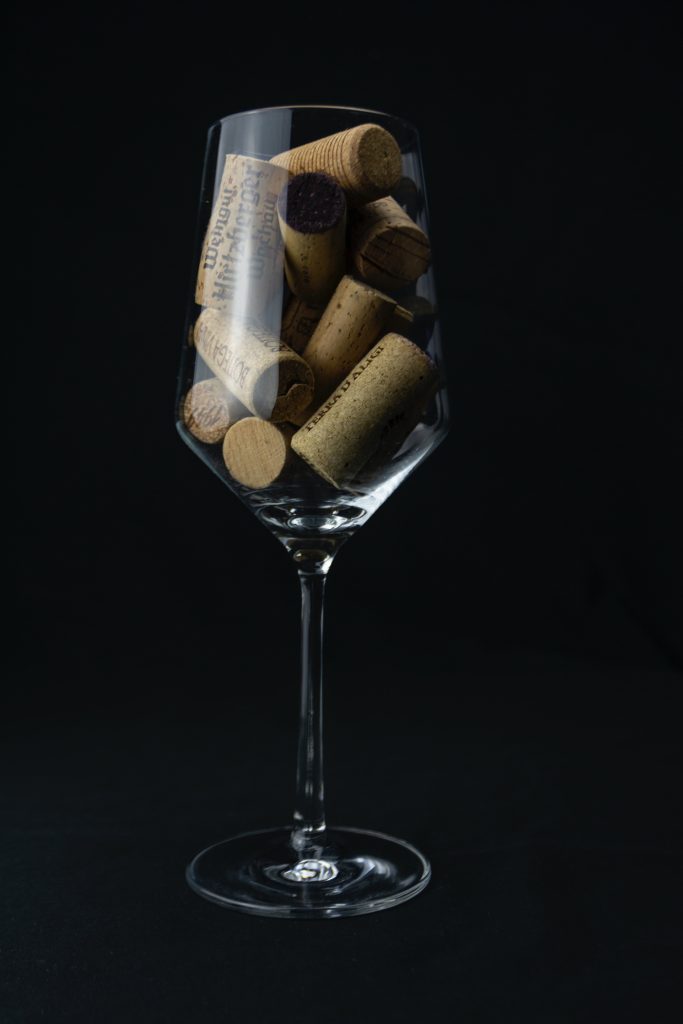It does have something… Pulling the cork out of the bottle with a soft pop. And maybe, in a routine way, sniff the cork to make a first contact with the noble liquid in the bottle.
But the harsh reality is that cork is rare and, above all, gradually becoming unaffordable for the average winemaker. You must know (that is to say: you really MUST not know, but since you read the blog it will probably interest you….) that cork is made from the bark of the cork tree. So: bark off, wait a few years (nine) until it has grown back (nine years?) and only then can the cork be removed again (yes, nine years).
And if they also start covering bathrooms with cork, it will be gone rapidly…
There are really only two reasons, for the producer, to choose natural cork: prestige and the fact that they produce wines that are destined to keep for a long time. Don't underestimate the first reason...
Quality wines are no better sealed than with a quality natural cork from about half a euro in bulk. They simply let in that mini fart of air that the wine needs to evolve, because make no mistake: clinically closed, the wine will not reach the desired quality. And the price of these wines is such that the extra half a euro per bottle will not make a difference.
The obvious alternative is pressed cork. That looks like natural cork, is actually natural cork but then a glued together version of the leftovers of those previously mentioned, one-piece corks. Don't worry, high-quality, highly harmless adhesives are used… But it already sounds a bit ambivalent when you think about it. No?
And yet, you drink more wine sealed with a pressed cork than any other stopper. That's the beauty of it: it does not detract from the quality of more than three quarters of all wine and it is a (sort of) cork.

There are also the flashy, fluo, ugly silicone corks!
I don't understand. Can someone explain to me how you can spend at least a year of your life growing grapes and making wine, a natural product that your body and limbs are committed to and you can be justifiably proud of, a noble pursuit that takes blood – sweat – tears and costs all you want, the plausible shortest route to a fight divorce… then seal the way out of the bottle (the only way to use it) with a Barbie pink plastic cork?
Imagine: you are a starting wine lover and one evening you invite some people who have been working on wine for a while and from whom you have already learned something. People you want to impress now, so you've asked for advice from your favorite wine supplier who has touted a twelve-euro wine as a discovery, also for renowned wine lovers.
You explain from which region the wine comes, in the meantime removing the top of the capsule with your sommelier (hip corkscrew) just below the thickening on the neck (as it should be), list the grapes and their respective proportions, run your professional crank puller (perfectly vertically!) handy in the cork, subtly add that they will soon be allowed to place a bet on the price and then you pull a FLUO VOMIT GREEN cork out of the bottle with an artificial “flop”.
Rest assured that a smile will be hard to suppress for your audience.
Then a screw cap doesn't sound so bad, does it? Closes perfectly for an unlimited time and requires no tools or skills to open. And, on an exceptional occasion when the bottle does not run out, it also closes perfectly again. That, in exchange for a little nostalgia.
Because it is of course true that those screw caps are not made by accident. Long-term studies have provided insights into which felt pads, in the screw cap, guarantee the same effect as the classic natural cork. A perfectly dosed mini amount of oxygen depending on the potential of the wine, it is available. A lot more manipulable than cork!
Ever heard of “cork taste”? Of course you can't have that with a screw cap. Although it must be said that the occurrence of trichloro-anisole, TCA if you have had a glass or two, is not that bad in practice and even the 2% that is usually specified as a factor seems amply calculated to me.
So what makes screw caps considerable as an alternative to natural cork? The rising cost of the latter, a matter of supply and demand. What prevents the screw cap from the absolute breakthrough? Image. But do not forget that you also need other bottles to work with screw caps and that this will also be a stumbling block in practice.

I maintain that more than three quarters of all wine (and I'm still holding back) is made for consumption within four years and that the screw cap can seal it more than perfectly, cheaply and a lot more practically. And for those exceptions that evolve for decades into the potion of the gods? The price of the cork will not matter there, and there is more than enough cork production for that.
Only the wine world is not known for its pragmatic approach. Rather for atmosphere and tradition. Which is also nice of course.
And of course we have to make sure that there is enough cork available for the Champagnes, Cavas, Prosecco's and the like, because you don't want to screw these open…

